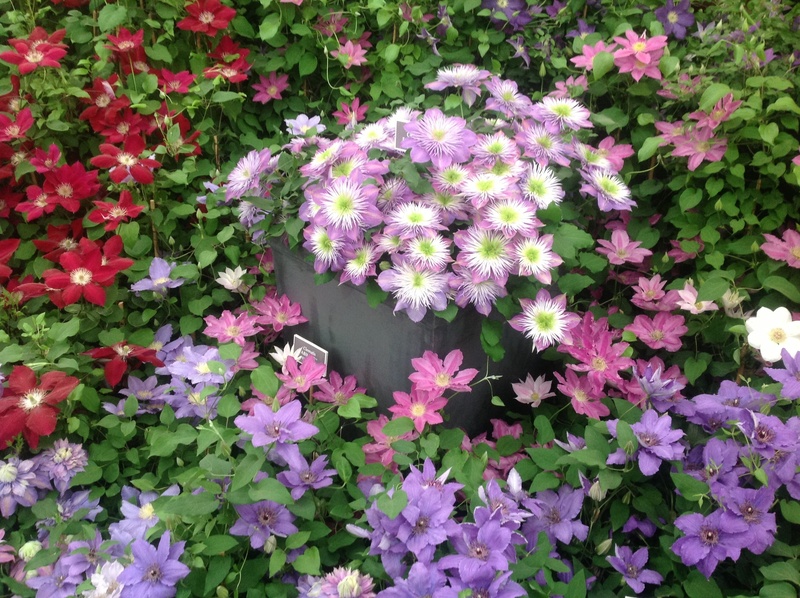From Windowsill to Table: Herb Garden Insights
Posted on 28/06/2025
From Windowsill to Table: Herb Garden Insights
Imagine reaching for a handful of fresh basil or a sprig of fragrant rosemary right on your windowsill as you craft a home-cooked meal. Herb gardening has become a beloved hobby for aspiring chefs, busy families, and anyone seeking a bit of lush green in their daily routine. This comprehensive article delivers in-depth herb garden insights--from choosing the best herbs for indoor spaces to creative ways of incorporating homegrown flavors into your kitchen repertoire.

What is a Herb Garden and Why Grow One Indoors?
Herb gardens, whether on your windowsill or outdoors, offer more than just fresh flavors. They're a burst of greenery, a tool for sustainable living, and a delightful introduction to gardening for all ages.
- Flavor at Your Fingertips: Nothing matches the taste of just-picked herbs in your recipes.
- Health Perks: Homegrown herbs are fresher, often more nutrient-dense, and free from pesticides.
- Eco-Friendly: Reducing reliance on store-bought herbs cuts down on packaging waste and transportation emissions.
- Accessible for Everyone: You don't need a backyard--just a sunny windowsill or a table near natural light.
Why the Windowsill?
The windowsill is an ideal spot for small indoor herb gardens because it often offers direct sunlight, warmth, and visibility--reminding you to water and harvest regularly. Let's dive into how you can optimize this space for a flourishing mini-garden.
Best Herbs for Indoor Herb Gardens
Selecting the right plants is crucial for success. Some herbs adapt better to container life and the unique environment of your windowsill or table than others.
- Basil: Loves warmth and sun. Snip regularly for bushier growth.
- Chives: Hardy, easy to grow, and perfect for salads, potatoes, and omelets.
- Parsley: Rich in vitamins and versatile in cooking.
- Mint: Vigorous grower--plant separately to avoid crowding others.
- Rosemary: Needs good drainage; it's aromatic and flavorful in roasted dishes.
- Oregano: Staple herb for Mediterranean dishes--requires minimal care.
- Thyme: Compact, resilient, and a favorite in savory dishes or herbal teas.
Herbs Not Recommended for Indoors
Some popular garden herbs like dill and coriander (cilantro) have long taproots or bolt quickly under indoor conditions, making them less ideal for windowsill gardening. Focus on compact, frequently-harvested herbs for your first foray.
Setting Up: Step-by-Step Herb Garden on Your Windowsill
One of the most exciting aspects of windowsill herb gardening is its simplicity. You don't need expensive equipment or extensive gardening experience. Just follow these steps for a thriving indoor herb garden:
1. Choosing Your Containers
- Pick pots with drainage holes to prevent soggy roots.
- Window boxes, terracotta pots, or even recycled containers work well.
- Consider matching trays to catch excess water and protect your sill or table.
2. Soil Selection
- Use high-quality potting mix, ideally formulated for herbs or vegetables.
- Add a bit of sand or perlite for better drainage, especially for Mediterranean herbs like rosemary or thyme.
3. Sunlight Needs
- Most herbs need 6-8 hours of sunlight daily.
- South or west-facing windows are optimal for sunlight exposure.
- If your windows don't offer enough light, supplement with LED grow lights.
4. Watering Wisdom
- Let the soil dry slightly between waterings--overwatering is a common mistake.
- Check soil moisture by inserting your finger up to the first knuckle; if it feels dry, it's time to water.
- Be consistent, but never let the roots sit in standing water.
5. Spacing and Air Circulation
- Space pots adequately to prevent overcrowding and allow air flow.
- Rotate pots occasionally for even sun exposure and robust, upright growth.
6. Fertilization
- Feed lightly--once every 4-6 weeks--with a balanced liquid fertilizer.
- Organic options like fish emulsion or compost tea are gentle for edible plants.
Top Tips for Thriving Indoor Herb Gardens
- Pinch and Harvest Regularly: Frequent harvesting encourages bushy growth and delays flowering (bolting).
- Watch for Pests: Keep an eye out for aphids or spider mites. Rinse leaves periodically and use natural solutions if pests appear.
- Cleanliness: Remove dead or yellowing leaves to promote healthy growth and reduce disease risk.
- Climate Considerations: Keep herbs away from cold drafts or heaters, which can stress plants.
From Harvest to Table: Using Your Homegrown Herbs
Now comes the rewarding part--harvesting and enjoying your homegrown flavors. Here's how to make the most of your harvest:
- Snip Often: Use kitchen shears to prune shoots above a set of leaves to encourage growth.
- Add Freshness: Stir minced herbs into salads, dressings, sauces, or fold into baked breads for an aromatic boost.
- Finish Dishes: Delicate herbs like basil or parsley shine when tossed in just before serving.
- Beverage Infusion: Steep mint, lemon balm, or thyme in hot water for refreshing herbal teas or incorporate into cocktails.
Preserving Your Surplus
Growing more than you can use? Try these tips for preserving indoor herb garden surpluses:
- Dry herbs by hanging bundles upside down in a cool, dark, airy space.
- Freeze chopped herbs in olive oil or water using ice cube trays for measured portions.
- Make herb-infused oils or vinegars to capture and extend their flavor.
Common Challenges and Solutions for Indoor Herb Gardening
Even the most diligent gardeners encounter issues. Here's how to address common pitfalls:
Insufficient Light
- If herbs appear leggy or pale, they need more light--move to a sunnier spot or use supplemental grow lamps.
Watering Problems
- Yellowing leaves can indicate overwatering or poor drainage. Adjust your watering routine and check containers.
Pest Control
- Manual removal, neem oil spray, or diluted dish soap can help with common pests.
Temperature Swings
- Keep herbs away from radiators, air conditioners, and drafty windows.
Creative Herb Garden Ideas for Small Spaces
- Vertical Gardens: Use wall-mounted or hanging pots to maximize unused space.
- DIY Herb Towers: Stack pots to cascade basil, parsley, and chives.
- Repurposed Containers: Old mugs, teacups, or jars make charming, compact planters.
- Herb Scapes: Arrange several small pots on a tray to create a mini-landscape of green.
Small-space herb gardening not only enhances your kitchen window but also serves as living decor, inviting nature into your home all year round.
Nutritional and Culinary Benefits: Why Fresh Herbs Are Worth Growing
Homegrown herbs deliver unmatched flavor and nutrition compared to dried store-bought options.
- Richer Taste: Fresh herbs have more essential oils, resulting in vibrant flavors and aromas.
- Health Benefits: Many, like parsley and basil, contain antioxidants, vitamins A, C, and K, and beneficial plant compounds.
- Customization: Grow the varieties you use most--no more wilted supermarket bundles going to waste!
Your Kitchen, Your Rules
Growing your own herb garden means you can experiment with flavors, creating your signature dishes. From herbed butters to exotic pestos, the possibilities are endless.

FAQ: Windowsill Herb Garden Insights
How long do indoor herbs last?
With proper care, many herbs--like chives, mint, and thyme--thrive year-round. Basil and cilantro are annuals but can provide several months of harvest indoors.
Can herbs grow under artificial light?
Yes! Modern LED grow lights provide the right spectrum for healthy growth, allowing you to grow herbs even in windowless kitchens.
What's the fastest-growing herb for beginners?
“Basil and chives germinate quickly and offer rapid harvests for beginners. Mint is also famously resilient.”
Can I start my indoor herb garden from kitchen cuttings?
Absolutely. Many herbs like basil, mint, and oregano root easily from fresh cuttings placed in water before transplanting to soil.
What's the best way to fertilize indoor herbs?
Light, balanced feedings every 4-6 weeks with a liquid fertilizer or organic solution work best. Avoid over-fertilizing, which can reduce flavor intensity.
Conclusion: Bringing Herb Garden Insights to Your Table
From windowsill to table, cultivating a thriving herb garden indoors is easier and more rewarding than you might think. With a sunny spot, a few pots, and a splash of care, you'll enjoy endless fresh flavors, improved health, and the pure joy of nurturing something green. Start simple, be attentive, and soon you'll be sprinkling your own garden's bounty on everything from scrambled eggs to gourmet dinners--and sharing your herb garden insights with others.
"The heart of the home is where the herbs grow." Make your kitchen that center, and enjoy every step of your journey from windowsill to table!



